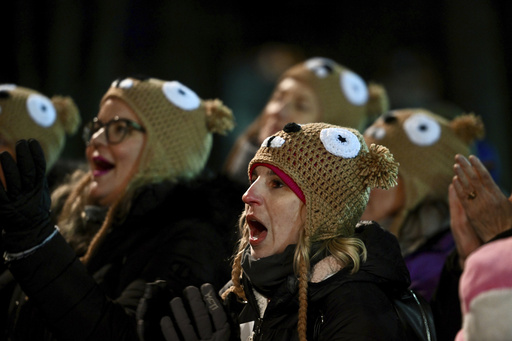
Groundhog Day, observed on February 2, brings attention to Punxsutawney Phil, but the tradition of predicting spring’s arrival has deep historical significance rooted in European agricultural customs. This day serves as a midpoint between the winter solstice and the spring equinox and is tied to ancient celebrations in the Celtic calendar, as well as the Christian holiday of Candlemas, which commemorates significant events in religious history.
Punxsutawney Phil is not alone in these predictions; other groundhogs across various states and Canadian provinces are also celebrated for their shadow sightings, offering a forecast of whether there will be six more weeks of winter or an early spring. While Phil’s event garners much attention, numerous local customs exist, particularly in eastern and central Pennsylvania, where people of German heritage have long observed groundhogs waking from hibernation. Many of these communities have their own traditions, sometimes viewing the Punxsutawney festivities as less reputable.
Despite the lightheartedness of the occasion, it is embraced with humor and an understanding that it is not serious business. According to a representative from the Punxsutawney Groundhog Club, the aim is to entertain and bring joy to attendees.
Historically, Groundhog Day has its roots in ancient Celtic traditions that recognized important agricultural dates, celebrated midway between the seasonal solstices and equinoxes. The Celtic festival of Imbolc corresponds with the Christian observation of Candlemas, occurring close to the time when Jesus was presented at the Temple. Ancient societies would look to natural cues from the sun, stars, and animal behaviors to inform farming and other essential practices. This led to the incorporation of weather-predicting animals, which, in the case of Pennsylvania Germans, was adapted to feature the groundhog.
A diary entry dating back to 1841 includes one of the earliest mentions of groundhog weather predictions in Morgantown, Pennsylvania, highlighting this tradition among German-descended families. Scholars like the late Don Yoder point out that the festival likely originated from ancient, possibly prehistoric, weather lore.
The celebration in Punxsutawney began when German settlers in the region started annual gatherings centered around picnicking and hunting groundhogs, evolving over the decades. By the late 19th century, the Punxsutawney Groundhog Club was established, assuming responsibility for Phil and his family in a specially designed habitat adjacent to the local library.
Phil’s predictions are not always uniformly timed; for instance, he has been known to delay his emergence significantly on occasion. The popularity of the 1993 movie “Groundhog Day” sparked new interest, but it also brought challenges with unruly crowds. Consequently, to maintain the festive atmosphere, restrictions on alcohol consumption were imposed at the event site.
In addition to Punxsutawney, other locales such as Quarryville have their interpretations of Groundhog Day, with the Slumbering Groundhog Lodge earning recognition for announcing their own weather forecasts through another local groundhog.
Related to the squirrel family, groundhogs—also known as woodchucks or whistle pigs—are herbivorous and can be consumed by humans, though they are not frequently part of the typical diet. Some gourmets believe that young groundhogs that have fed on clover offer the best flavor, suggesting culinary possibilities for adventurous chefs.
Groundhog clubs began forming in the 1930s, created to preserve and celebrate Pennsylvania German heritage. These social groups often enforced rules regarding the use of the Pennsylvania Dutch language and traditionally consisted of men. Many such clubs continue to operate, uniting their members through the commonality of groundhog predictions, as explained by an anthropology professor who studies these unique lodges.
As for the accuracy of Phil’s predictions, there’s been scrutiny on his track record. Definitions of “six more weeks of winter” can be ambiguous, and the ability of a groundhog to communicate its shadow sighting remains in jest for many. Generally, Phil has been found to predict longer winters more frequently than early springs, with evidence showing that his forecasting skills are sometimes challenged even by weather science.
Although critics, including governmental agencies tracking national weather patterns, raise doubts about Phil’s reliability, the festive spirit and community bonding remain at the heart of Groundhog Day celebrations.

